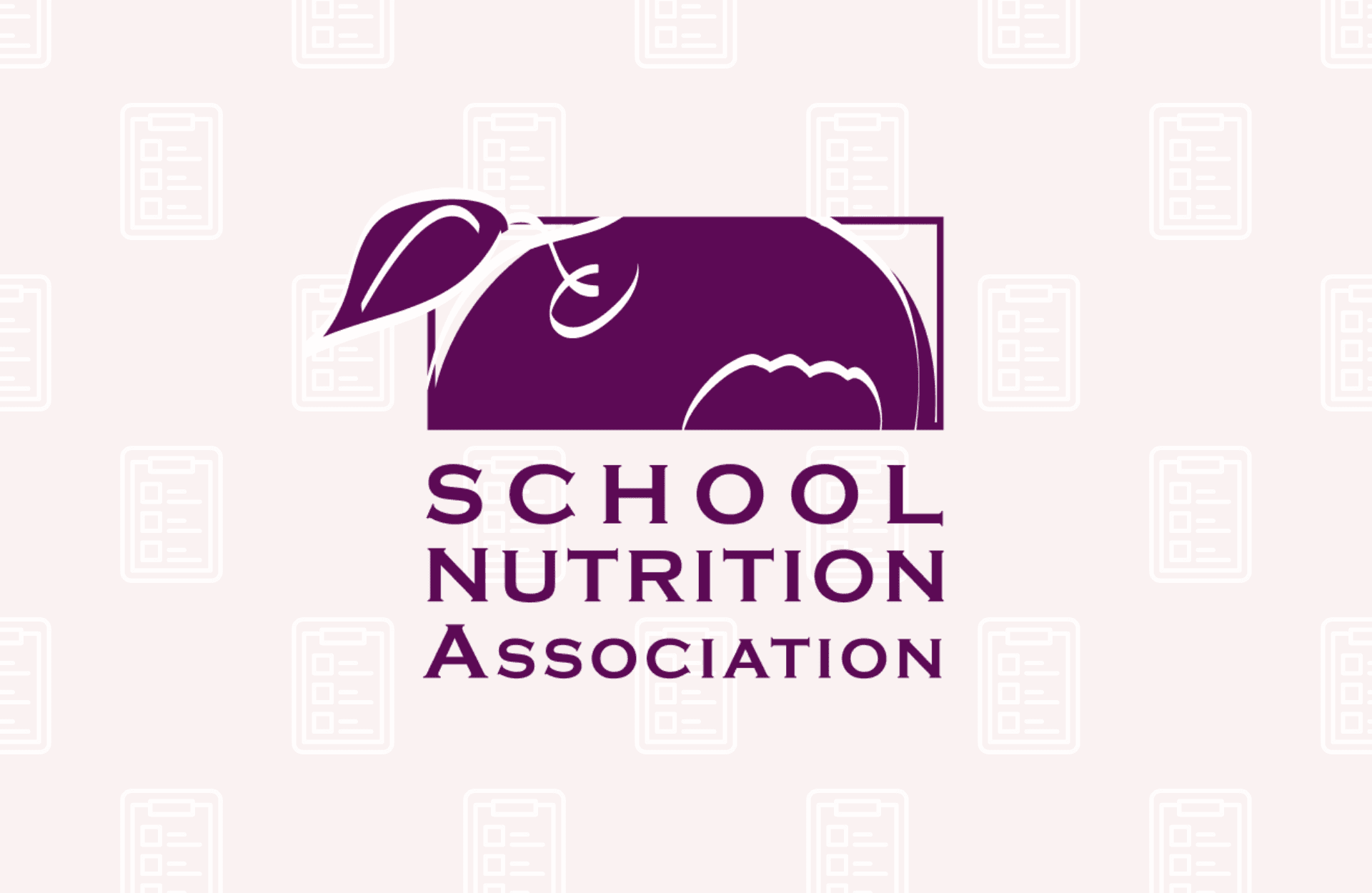FOR IMMEDIATE RELEASE:
Contact: Diane Pratt-Heavner
301-686-3124
media@schoolnutrition.org
SNA Comments on USDA School Meal Rule
2017-11-29
NATIONAL HARBOR, MD – The U.S. Department of Agriculture (USDA) has released an interim final rule to extend current regulatory flexibility for school meal programs through School Year (SY) 2018-19. The non-profit School Nutrition Association (SNA) commended USDA for the extension and has called for even greater flexibility under whole grain and sodium mandates to address challenges while maintaining strong standards to benefit students. SNA is assembling a member working group to develop detailed recommendations to improve a final rule.
The interim rule maintains Target 1 sodium limits for school meals, and USDA “anticipates” extending this deadline through SY 2020-21. States can continue to offer waivers to schools demonstrating hardship in procuring or preparing specific whole grain rich foods that are acceptable to students (eg whole grain tortillas or brown rice). Finally, the rule provides schools the option to offer flavored 1% milk. USDA requests public comment on the interim rule and the sodium reduction timeline to inform the development of a final rule, effective in SY 2019-20.
A recent SNA survey of school meal programs across the country, detailed below, demonstrated the need for increased flexibility under the rules. The Government Accountability Office (GAO) and USDA have also cited significant challenges under updated standards with student acceptance, food waste, product availability and participation – more than one million fewer students choose school lunch each day under the updated nutrition standards. To address these challenges, SNA has advocated to restore the initial requirement that at least half of grains offered with school meals be whole grain rich and to maintain the Target 1 sodium levels permanently.
“School nutrition professionals have achieved tremendous progress, modifying recipes, hosting student taste tests and employing a wide range of other tactics to meet regulations while also encouraging students to enjoy healthier school meals,” said SNA President Lynn Harvey, Ed.D., RDN, LDN, FAND, SNS. “Despite these efforts, school nutrition professionals continue to report challenges with sodium and whole grain mandates, as well as limited access to whole grain waivers. SNA appreciates USDA’s desire to address challenges and will provide comment on how to improve a final rule to support the preparation of healthy school meals that appeal to students.”
SNA’s 2017 School Nutrition Trends Report examined the positive efforts of schools to meet nutrition mandates while demonstrating the need for increased flexibility under the nutrition standards:
WHOLE GRAINS:
School nutrition professionals are working to increase student acceptance of whole grain foods required in school meals. Among responding districts:
- White wheat flour is utilized by 80% to give whole grain foods a lighter appearance
- 70% have conducted student taste tests to promote whole grain options and gather student feedback
- 39% helped students adjust by gradually increasing the amount of whole wheat flour in recipes
Despite these proactive steps, 65% of responding districts report challenges with the current mandate that all grains offered with school meals be whole grain rich; 22% of responding districts note a “significant challenge”
- Among districts reporting difficulties, 96% cite challenges with student acceptance and more than half (54%) note the higher cost of whole grains.
- When asked to identify which whole grain food is most troublesome, pasta or noodles was the top concern, named by nearly half of these districts.
- Nearly one-third of respondents have obtained a whole grain waiver. An additional 19% indicate they would like to acquire a waiver, but nearly 50% of these respondents feel there are barriers to applying for or receiving a waiver.
SODIUM:
Schools reported employing a wide range of tactics to meet sodium limits for school meals. Notably:
- 73% of responding districts have reformulated recipes
- Increased scratch preparation of foods was cited by 61%
- 57% have limited the service of condiments
- One-third have reduced portion sizes
Despite these efforts, schools nationwide express concerns about sodium limits:
- 92% of responding school districts are concerned about the availability of foods that will meet future sodium limits and are well accepted by students; 58% of respondents report they are “very concerned.”
- 88% face challenges with student acceptance or familiarity of reduced sodium foods.
- A large majority of respondents also cite challenges with naturally occurring sodium in foods such as milk, low-fat cheese and meat; product or ingredient availability; and sodium levels in condiments.
About School Nutrition Association:
The School Nutrition Association (SNA) is a national, non-profit professional organization representing 57,000 school nutrition professionals across the country. Founded in 1946, SNA and its members are dedicated to making healthy school meals and nutrition education available to all students. For more information on school meals, visit www.SchoolNutrition.org/SchoolMeals.
Related Articles

SNA Conference Offers School Meal Innovations
Read More

SNA Urges MAHA Commission to Invest in School Meals
Read More




